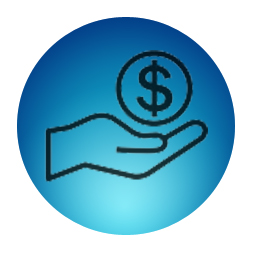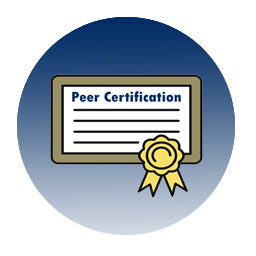
We will start 2022 with a story, the experiences of a peer in our community, and the realization he had after emerging from his first long-term mental health treatment. We have permission to use this story, but small facts have been changed as the person does not wish to be identified. We hope it provides you with some food for thought.
What’s wrong with you?
Asking the wrong questions will never lead to the right course of action.
What happened to you? This one simple change will impact a person’s recovery more than you think, and it is not a new idea. I want to share a story with you. At the end of this story, I will ask a different question that might change how you look at our entire system of support.
There was a man who worked hard for what he had in life. He was always kind and was the first person to offer his help whenever he saw someone else struggling. His sense of humor always had the people around him having a good time. It was no surprise when he met a wonderful woman who later became his wife and mother of his children. This story takes place nine years after he got married. His son was almost seven years old, and his daughter had just turned four. He felt blessed, life was not always easy, but he found it very rewarding.
We all know no one lives a perfect life, and the stress of unforeseen events often derails people when it is least expected. Sometimes many of these events can pile up all at once or over a short period of time. It was early October when the dominos started to fall, and it all started with a trip to the dentist for his son. It’s funny what some insurances don’t cover. The next thing to be put on the credit card was replacing the refrigerator in the kitchen. It died in the middle of the night, spoiling most of the food purchased a few days earlier. Like most people, this man lived paycheck to paycheck and had little in the way of savings.

On the heels of these two significant expenses, the mortgage payment came due, which he borrowed some money to cover. He knew it would take a few months to crawl out of this hole, but he was still optimistic. That is when the last domino fell. Earlier in the year, his company shut down his office and consolidated their locations. This turned a short 15-minute commute into seventy miles one way. Of course, the icing on the cake to this string of unfortunate happenings was the transmission in the car failed. A tow home took the last few hundred dollars he had, and it did nothing but place a big problem in his driveway.
Page 1
Public transportation could not get him to work, and he could not find anyone who was in a position to loan him the $1,200 estimated to get him mobile again. A few weeks later, his employer opted to replace him. The company paid him for the vacation time he accumulated, which, after taxes, totaled less than $700. He filed for unemployment, food assistance and researched programs to help with home heating oil. His wife also looked for work and started babysitting on Friday nights and weekends to make a couple of extra dollars. His family had to make hard choices, and on top of all the stress, he could not shake the feeling that it was all his fault.
One night, a few days before Christmas, he walked to a park and sat down on a bench. He had come to a point where he believed he could not provide for his family and had become useless to everyone. He does not remember how long he sat there before a woman approached him and asked, are you okay? To this day, he still does not know why he opened up to her, but he told her the entire story as tears streamed down his face. She offered to try and find him some help, he agreed, and she called 911. First responders showed up to provide aid. He told the officers that he had a firearm in his pocket and what he had intended to do with the only bullet it contained.
Over the next three weeks, he began his recovery in the local hospital’s locked psychiatric unit. During this time, he was assigned a caseworker who assured him they would get him on state insurance and not worry about the treatment cost. As part of his discharge planning, he was asked to join an intensive outpatient (IOP) program for five weeks, one on one talk therapy, and a monthly appointment with a psychiatrist. All paid for by his newly acquired insurance. It took months before he could finally tell his wife what was going through his head. He had been ashamed and knew that his actions and the ordeal he had just experienced had hurt her. Thankfully she chose to stand by him and try to get their family back on their feet together.
Today, three years later, they are still together and are doing much better. He found a new job, a person he was in IOP with worked for a company and was able to get him an interview. The job required some travel, and he was provided with a company car that he could use outside of work. I still talk to him from time to time, and the one thing that truly stands out to me as a Certified Peer Supporter is his takeaway from his experience, he said:
“At the lowest point in my life, people came to my rescue. After all was said and done, my treatment cost over $45,000. When I got home from my last day of IOP, I looked out the window at the dirt-covered car that was once my last straw. That is when it hit me. With all the money put into my recovery, there was not one dime put towards the $1200 problem where it all began. Here I stand at the exact place I started. With all the people involved and all the resources used, how is that even possible?”

There are two things to take away from this story. First and most importantly, a peer in his IOP group connected with a resource to start rebuilding his life. Second, the current support system is not a safety net, and it does not catch a person before they fall. What we created tries to come in and fix the damage from the impact that person suffered. This is where I must ask a new question, a question that is likely on the minds of many who have received “support” from the mental health and addiction treatment system.
What happened to us?
What happened to us as a society where we think it is better to let a person crash and burn then search the wreckage and rebuild afterward? Is it because a treatment and recovery system is more profitable than one of support and compassion? As a person in recovery, I once looked at the WRAP (Wellness Recovery Action Plan) as a positive measure to advocate for myself in a time of crisis. I soon realized that I would have to crash again to implement this plan. This is not a plan designed to keep me on my feet and provide lessor levels of support when I might need them. Where is that plan?
At the beginning of this article, I said that the idea of asking “what happened to you” is not a new one. When we think about old-school psychiatry, we invoke images of a person lying on a couch telling the doctor their story. In those days, the psychiatrist learned your story, and they wanted to know what happened to you that got you to where you are in that moment. What happened to us which caused that practice to be abandoned?
Page 2
What happened to the fifty-minute appointments where they learned about their patients’ lives? What caused them to turn it into a fifteen-minute appointment where they only want to understand our symptoms?
We need to change if we genuinely want to reverse the rising trend of suicide, stress-related mental illnesses, and the ever-increasing demand for mental health services. We need to change the priority of the current treatment and recovery model to one of support and compassion. If we see someone heading toward a cliff, we stop them, not wait until after we see them fall. Maybe in the future, we will change the question again. When we see someone struggling, we can assure them that they are not alone, smile, and ask, How can we help?

HAPPY NEW YEAR… Or is it? Starting in the fourth quarter of last year, we began to see things that suggested 2022 would be a big year for change in the peer recovery community. It is still uncertain how these changes will impact our current way of doing things. All we know is that these changes are being discussed largely without any peer involvement. On the state level, DMHAS is making choices and working on contracts with a third-party non-profit to create new standards for peer training and certification without any direction from the newly established task force.

Rather than start a conversation and get feedback from the community on this move, DMHAS opted to jump in with both feet then talk about holding town hall-style meetings after the fact. Perhaps this was done because they already know that many of us believe peer support should be peer managed?
Ripple is hosting RSS Community Conversations via Zoom. Please come and join the discussion. Current topics include: Peer Certification Standards, Peers in the Workforce, Peers Supporting Each Other, and Self Care. Anyone who is a certified peer-level supporter, a Recovery Support Specialist, Recovery Coach, Certified Peer Recovery Specialist, or equivalent in the State of Connecticut may attend.
Meetings are held every Wednesday at 7:00 PM and run for approximately 90 minutes.
The Zoom link is: https://us02web.zoom.us/j/82840222585
You can dial into our meetings using one of the following two options, both of which are based out of New York state. This is the closest point of access for Connecticut residence. The meeting ID is the same for either phone-based method to connect. It is 828 4022 2585
One tap mobile: +19292056099,,82840222585# US (New York)
Dial-in: +1 929 205 6099 US (New York)
Please be sure to read the group guidelines before joining. Thank you!
Page 3

Page 4



